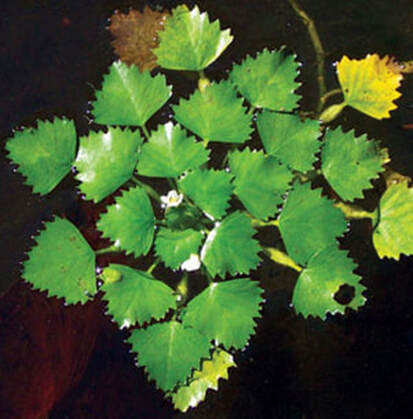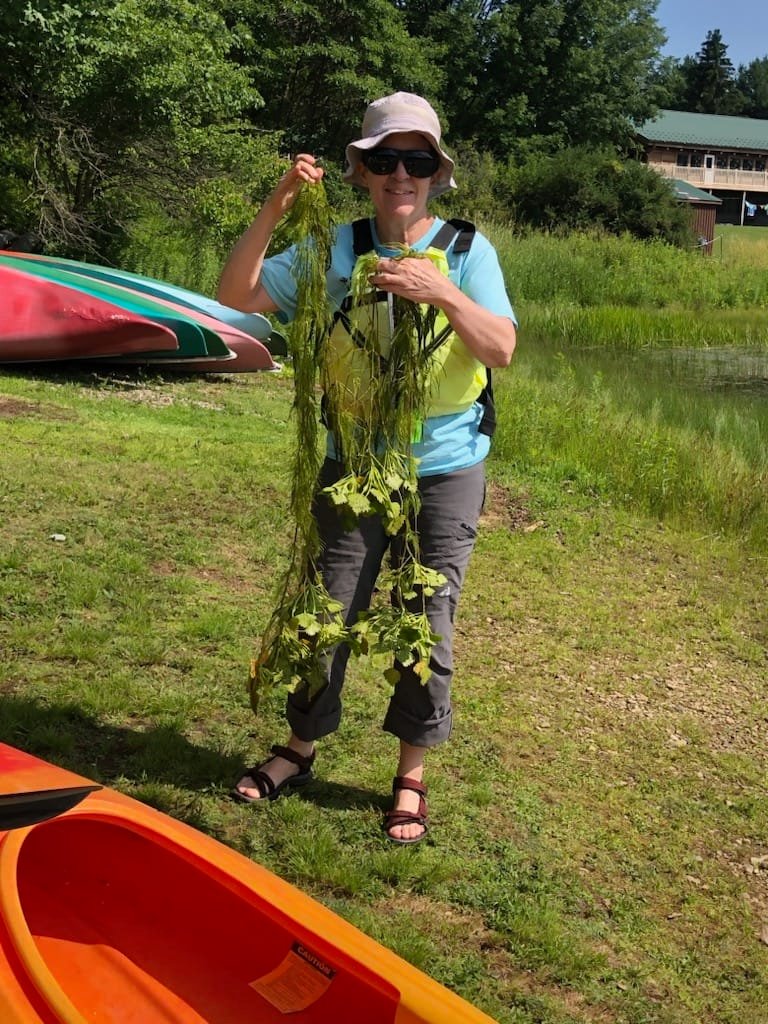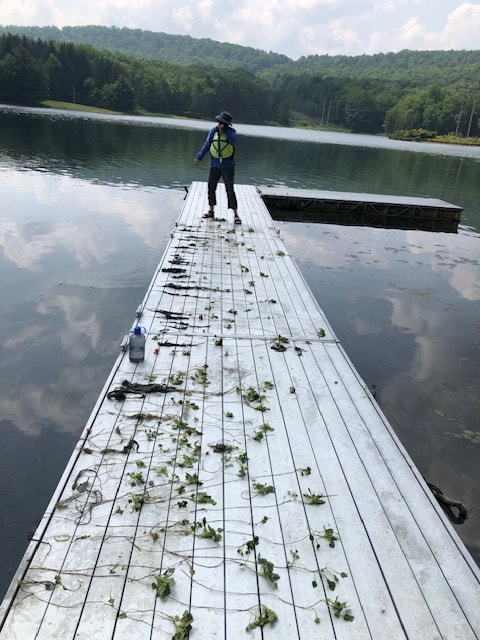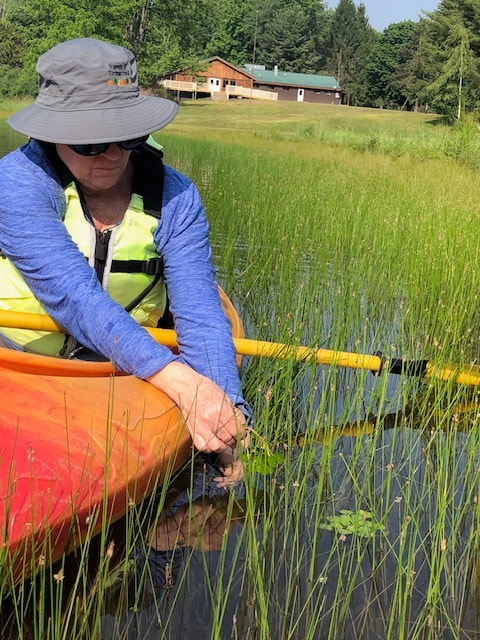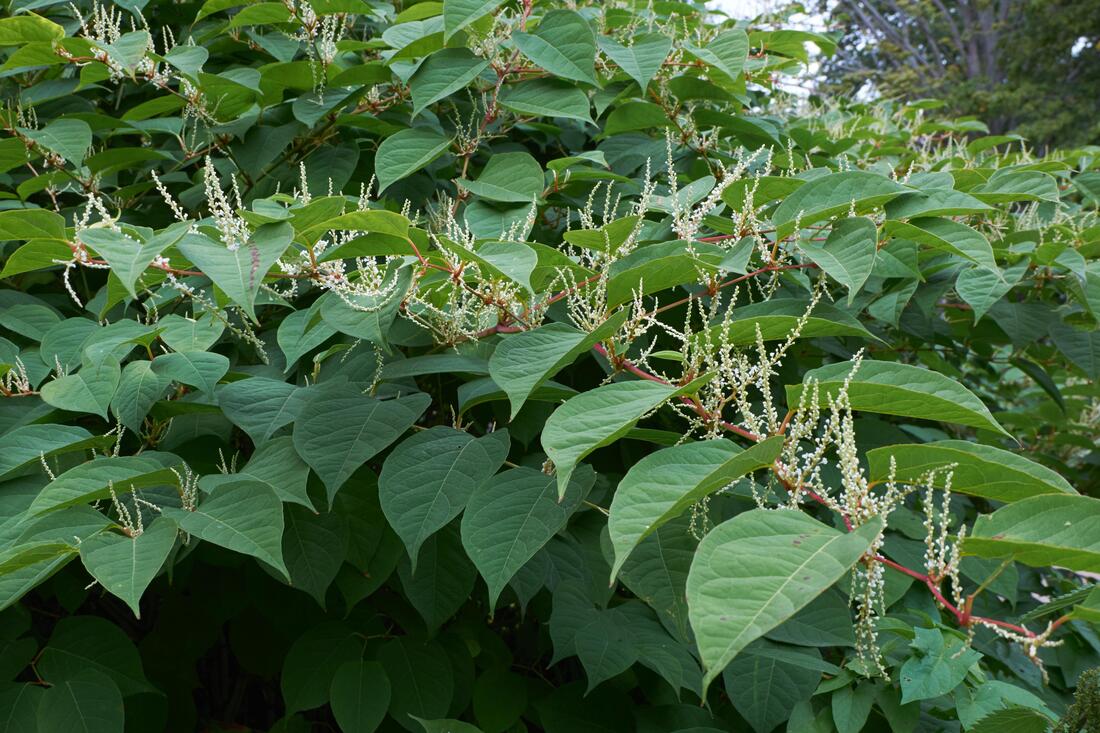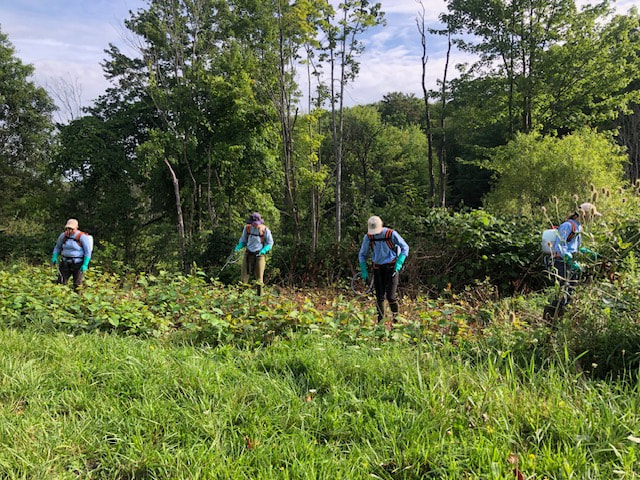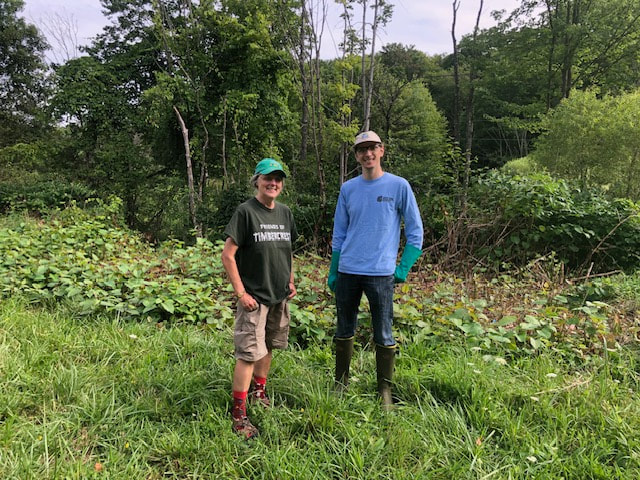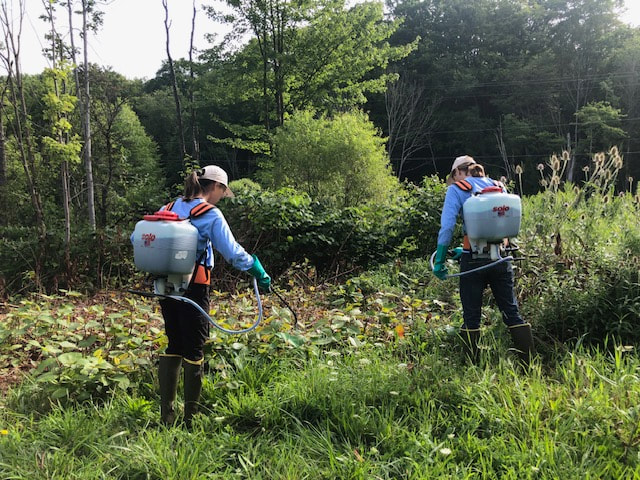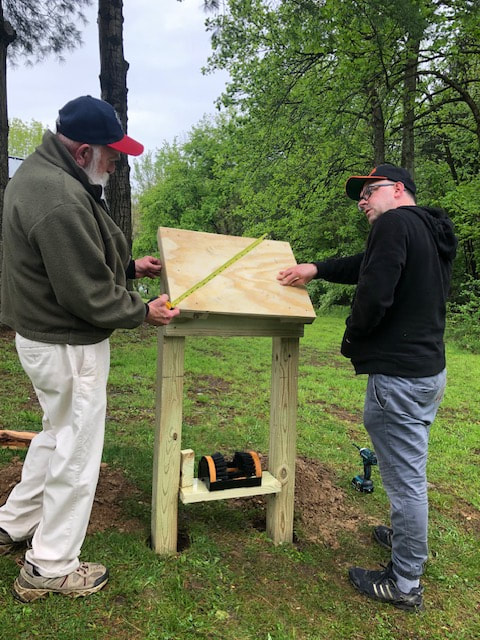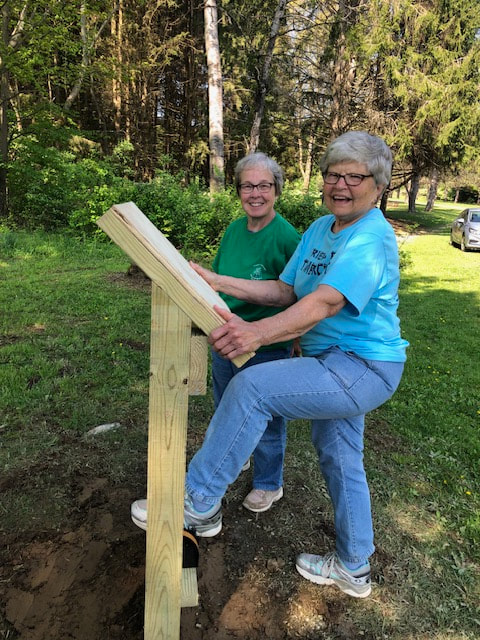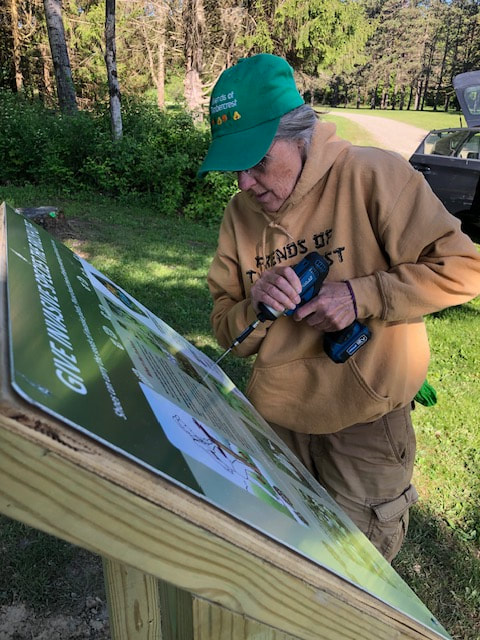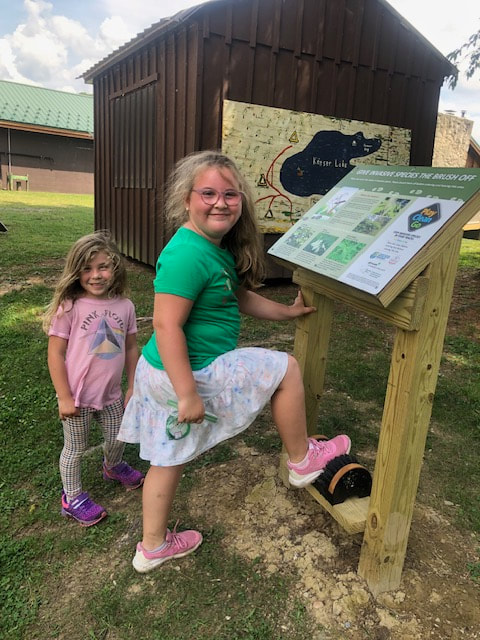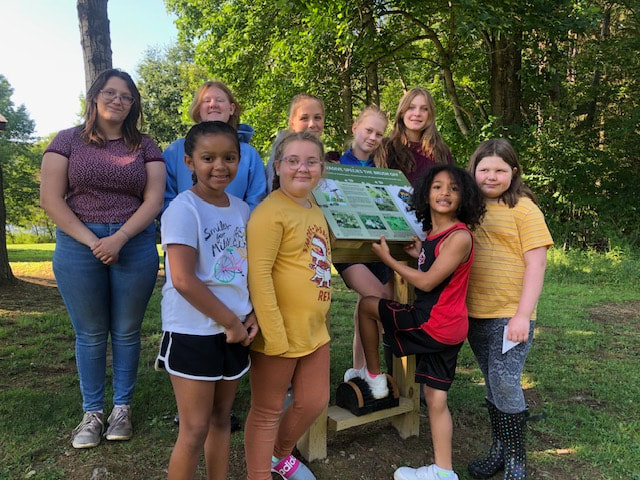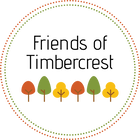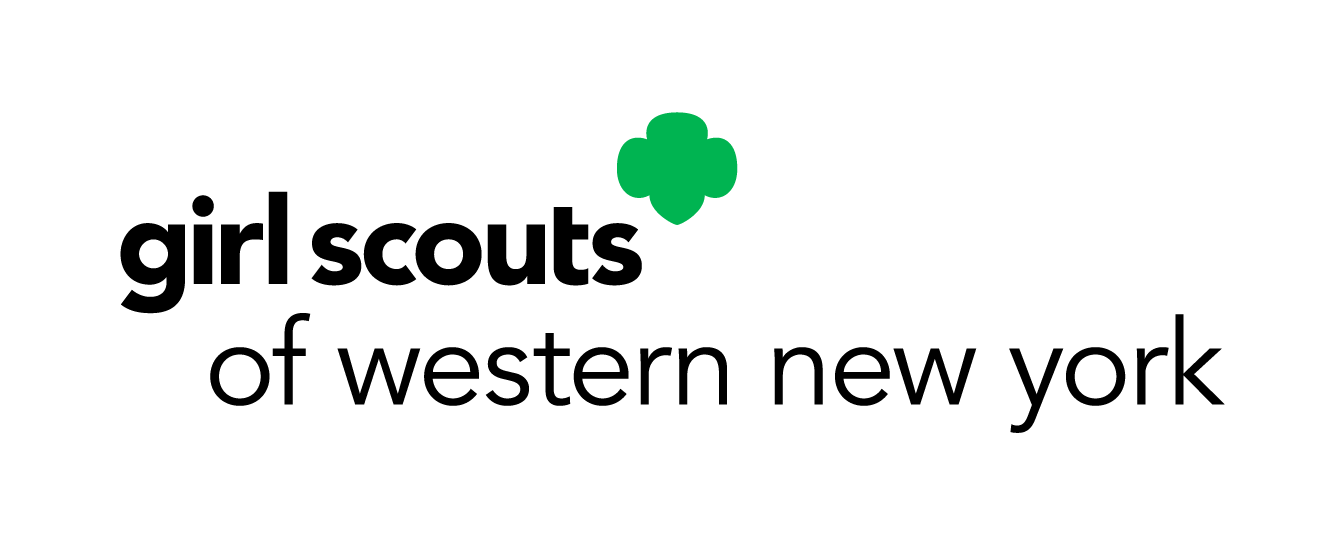Invasive Species Management
|
Water Chestnut on Keyser Lake
From the Western New York Partnership for Regional Invasive Species Management website: "Water chestnut is a fast-growing, floating annual that can grow to 16 ft. It has feathery, submersed leaves and triangular, toothed, floating leaves that are glossy. Floating leaf stalks have visible bulbous bladders and commonly form rosettes. Flowers with four white petals normally bloom in July. The most distinctive trait of this plant is its thorny nutlets which mature in late summer. Reproduction occurs from these very sharp nutlets and from fragmentation of the rosettes." Left unchecked, Water Chestnut can choke out all native species and completely cover a body of water. Friends of Timbercrest began removing this plant in July of 2020 with initial help from WNY PRISM. Removal efforts have continued annually since. We begin in late June with an initial pull, then survey and pull through early August. We attempt to get plants before they can set seeds, also know as nutlets. Because the nutlets can remain viable for many years, this is not a one and done effort. |
|
Japanese Knotweed Along Gulf and Sarver Roads
From the WNY PRISM website: "Japanese knotweed, (Reynoutria japonica), is a fast-growing, herbaceous perennial with jointed, hollow stems and alternate, leathery leaves that are broadly ovate. A cascade of white flowers blooms in August, and dormant reddish stems are visible in winter. Two additional knotweed species are commonly found within western New York. Giant knotweed, (Reynoutria sachalinensis) leaves are much larger than Japanese knotweed. Bohemian knotweed, (Reynoutria x bohemica), is a hybrid of Japanese and giant knotweed, sharing characteristics of both. All three knotweed species are invasive." "Knotweed's early spring emergence and dense growth give it a competitive advantage over native plants, enabling it to take over large areas. Its thick rhizomes can extend horizontally through soils for 60 ft. or more. Plants can emerge through concrete and asphalt, with potential impacts on infrastructure." This is NOT a plant we want on our property! |
Friends of Timbercrest identified patches growing close to the camp entrance along Gulf and Sarver Roads. We again partnered with WNY PRISM to begin the work in the summer of 2023 to eradicate those patches.
Boot Brush Station
To educate Girl Scouts and other visitors to Camp Timbercrest, Friends of Timbercrest arranged through WNY PRISM to install a boot brush station at camp. The station describes how seeds of plants may hitchhike in the treads of your shoes and boots and be carried to new locations where you might be hiking. It also gives information about some of the invasive species that WNY PRISM is currently on the watch for and attempting to control.
To educate Girl Scouts and other visitors to Camp Timbercrest, Friends of Timbercrest arranged through WNY PRISM to install a boot brush station at camp. The station describes how seeds of plants may hitchhike in the treads of your shoes and boots and be carried to new locations where you might be hiking. It also gives information about some of the invasive species that WNY PRISM is currently on the watch for and attempting to control.
|
Friends of Timbercrest preserve, enhance, and promote Camp Timbercrest in partnership with the Girl Scouts of Western New York.
|
This website is owned and operated by the Friends of Timbercrest (FOT). It is not an official website of GSUSA or GSWNY.
FOT works in partnership with GSWNY to preserve, enhance, and promote Girl Scout Camp Timbercrest so that it may always be a place where girls can connect with nature, try new things, and build confidence & self-reliance.
FOT works in partnership with GSWNY to preserve, enhance, and promote Girl Scout Camp Timbercrest so that it may always be a place where girls can connect with nature, try new things, and build confidence & self-reliance.
